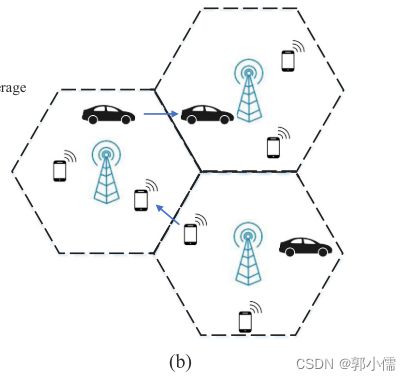- 2025年SDK游戏盾终极解析:重新定义手游安全的“隐形护甲”
上海云盾商务经理杨杨
游戏安全
副标题:从客户端加密到AI反外挂,拆解全链路防护如何重塑游戏攻防天平引言:当传统高防在手游战场“失效”2025年全球手游市场规模突破$2000亿,黑客单次攻击成本却降至$30——某SLG游戏因协议层CC攻击单日流失37%玩家,某开放世界游戏遭低频DDoS瘫痪6小时损失千万。传统高防IP的致命短板暴露无遗:无法识别伪造客户端流量、难防协议篡改、误杀率超15%。而集成于游戏终端的SDK游戏盾,正以“源
- 为了在未来的人工智能世界中取得成功,学生们必须学习人类写作的优点
睿邸管家
澳大利亚各地的学生在新学年开始使用铅笔、钢笔和键盘学习写字。在工作场所,机器也在学习写作,如此有效,几年之内,它们可能会写得比人类更好。有时它们已经做到了,就像Grammarly这样的应用程序所展示的那样。当然,人类现在的日常写作可能很快就会由具有人工智能(AI)的机器来完成。手机和电子邮件软件常用的预测文本是无数人每天都在使用的一种人工智能写作形式。据AI行业研究机构称,到2022年,人工智能及
- 大城市和小县城
平凡只要
教育随便一个公立初中老师都是排名靠前的师范类,硕士起步。衣服,随便哪个品牌,一般四折左右才会下手,小地方真的没有这么低折扣。日化用品,这些同样,内地的价格贵的多。牛奶这些更不要说,内地贵,大城市超市经常打折,毕竟人流量大,可以借此吸引人。说小城市消费低的,其实是对生活没有什么要求的,就是吃米饭+青菜+少量荤菜就能满足的。如果要天天牛奶当水喝,肉类当主食,穿要讲品牌,绝对一线消费低。就是房价太高,一
- Pktgen-DPDK:开源网络测试工具的深度解析与应用
艾古力斯
本文还有配套的精品资源,点击获取简介:Pktgen-DPDK是基于DPDK的高性能流量生成工具,适用于网络性能测试、硬件验证及协议栈开发。它支持多种网络协议,能够模拟高吞吐量的数据包发送。本项目通过利用DPDK的高速数据包处理能力,允许用户自定义数据包内容,并实现高效的数据包管理与传输。文章将指导如何安装DPDK、编译Pktgen、配置工具以及使用方法,最终帮助开发者和网络管理员深入理解并优化网络
- Anaconda 和 Miniconda:功能详解与选择建议
古月฿
python入门pythonconda
Anaconda和Miniconda详细介绍一、Anaconda的详细介绍1.什么是Anaconda?Anaconda是一个开源的包管理和环境管理工具,在数据科学、机器学习以及科学计算领域发挥着关键作用。它以Python和R语言为基础,为用户精心准备了大量预装库和工具,极大地缩短了搭建数据科学环境的时间。对于那些想要快速开展数据分析、模型训练等工作的人员来说,Anaconda就像是一个一站式的“数
- 人工智能应用研究快讯 2021-11-30
峰谷皆平
[HTML]ArtificialIntelligenceforSkinCancerDetection:ScopingReviewATakiddin,JSchneider,YYang,AAbd-Alrazaq...JournalofMedicalInternet...,2021ABSTACT:Background:Skincanceristhemostcommoncancertypeaffectin
- 机器学习必备数学与编程指南:从入门到精通
a小胡哦
机器学习基础机器学习人工智能
一、机器学习核心数学基础1.线性代数(神经网络的基础)必须掌握:矩阵运算(乘法、转置、逆)向量空间与线性变换特征值分解与奇异值分解(SVD)为什么重要:神经网络本质就是矩阵运算学习技巧:用NumPy实际操作矩阵运算2.概率与统计(模型评估的关键)核心概念:条件概率与贝叶斯定理概率分布(正态、泊松、伯努利)假设检验与p值应用场景:朴素贝叶斯、A/B测试3.微积分(优化算法的基础)重点掌握:导数与偏导
- 从振动信号到精准预警:AI 如何重塑工业设备健康管理?
缘华工业智维
人工智能计算机视觉边缘计算信息与通信
在智能制造浪潮席卷全球的当下,工业生产正经历着从传统模式向智能化、数字化转型的深刻变革。在这场变革中,AI驱动的振动分析技术犹如一颗璀璨新星,成为工业设备可靠运行的“健康卫士”。它通过在设备关键部位部署振动传感器,如同医生为患者听诊般实时采集设备运行时的振动信号,再借助强大的人工智能算法对这些“工业脉搏”进行深度解析,从而实现对工业设备从故障预警到寿命预测的全周期精准守护。一、AI振动分析:设备状
- 量子计算解决气候变化:科学家找到了新方法
大力出奇迹985
量子计算
气候变化已成为全球面临的严峻挑战,传统计算方法在应对与之相关的复杂问题时存在诸多局限。而量子计算作为新兴技术,为解决气候变化难题带来曙光。本文深入剖析科学家利用量子计算应对气候变化的新方法。量子计算凭借独特的量子比特与量子特性,在加速气候模型计算、优化模型参数、预测极端天气事件等方面展现出巨大优势。同时,在可再生能源整合、电网管理、碳捕获等实际应用场景中也发挥着重要作用。尽管目前面临硬件和算法等方
- AI 生成虚拟宠物:24 小时陪你聊天解闷
大力出奇迹985
人工智能宠物
本文围绕AI生成虚拟宠物展开,介绍这类依托人工智能技术诞生的虚拟伙伴,能实现24小时不间断陪伴聊天,为人们解闷。文中详细阐述其技术基础,包括自然语言处理、机器学习等;分析多样功能,如个性化互动、情绪回应等;探讨在独居人群、压力大者等不同群体中的应用场景,最后总结其为人们生活带来的积极影响及未来发展潜力,展现AI虚拟宠物在陪伴领域的独特价值。一、AI生成虚拟宠物的诞生背景与技术基石在快节奏的现代社会
- 基于Python的AI健康助手:开发与部署全攻略
AI算力网络与通信
AI算力网络与通信原理AI人工智能大数据架构python人工智能开发语言ai
基于Python的AI健康助手:开发与部署全攻略关键词:Python、AI健康助手、机器学习、自然语言处理、Flask、部署、健康管理摘要:本文将详细介绍如何使用Python开发一个AI健康助手,从需求分析、技术选型到核心功能实现,再到最终部署上线的完整过程。我们将使用自然语言处理技术理解用户健康咨询,通过机器学习模型提供个性化建议,并展示如何用Flask框架构建Web应用接口。文章包含大量实际代
- GPT-4 在 AIGC 中的微调技巧:让模型更懂你的需求
AIGC应用创新大全
AI人工智能与大数据应用开发MCP&Agent云算力网络AIGCai
GPT-4在AIGC中的微调技巧:让模型更懂你的需求关键词:GPT-4、AIGC、模型微调、监督学习、指令优化、过拟合预防、个性化生成摘要:AIGC(人工智能生成内容)正在重塑内容创作行业,但通用的GPT-4模型可能无法精准匹配你的垂直需求——比如写电商爆款文案时总“跑题”,或生成技术文档时专业术语不够。本文将用“教小朋友学画画”的通俗类比,从微调的底层逻辑讲到实战技巧,带你掌握让GPT-4“更懂
- AIGC内容生成实战:如何用ChatGPT+DALL·E打造高转化内容
AI大模型应用工坊
AI大模型开发实战AIGCchatgptai
AIGC内容生成实战:如何用ChatGPT+DALL·E打造高转化内容关键词:AIGC、ChatGPT、DALL·E、内容生成、高转化营销、多模态协同、提示词工程摘要:随着AIGC(人工智能生成内容)技术的爆发式发展,ChatGPT(文本生成)与DALL·E(图像生成)的组合已成为内容创作领域的“黄金搭档”。本文将深度解析二者的协同原理,结合实战案例演示从需求分析到内容落地的全流程,并揭示提升内容
- 数据分析领域中AI人工智能的发展前景展望
AI大模型应用工坊
AI大模型开发实战数据分析人工智能数据挖掘ai
数据分析领域中AI人工智能的发展前景展望关键词:数据分析、人工智能、机器学习、深度学习、数据挖掘、预测分析、自动化摘要:本文深入探讨了人工智能在数据分析领域的发展现状和未来趋势。我们将从核心技术原理出发,分析AI如何改变传统数据分析范式,详细讲解机器学习算法在数据分析中的应用,并通过实际案例展示AI驱动的数据分析解决方案。文章还将探讨行业应用场景、工具生态以及未来发展面临的挑战和机遇,为数据分析师
- AI人工智能中的数据挖掘:提升智能决策能力
AI人工智能中的数据挖掘:提升智能决策能力关键词:数据挖掘、人工智能、机器学习、智能决策、数据分析、特征工程、模型优化摘要:本文深入探讨了数据挖掘在人工智能领域中的核心作用,重点分析了如何通过数据挖掘技术提升智能决策能力。文章从基础概念出发,详细介绍了数据挖掘的关键算法、数学模型和实际应用场景,并通过Python代码示例展示了数据挖掘的全流程。最后,文章展望了数据挖掘技术的未来发展趋势和面临的挑战
- 数据中台中的数据科学工作台:Jupyter集成方案
AI大数据智能洞察
大数据与AI人工智能jupyter信息可视化ideai
数据中台中的数据科学工作台:Jupyter集成方案关键词:数据中台、数据科学工作台、JupyterNotebook、数据科学、机器学习、数据可视化、协作开发摘要:本文深入探讨了在数据中台架构中集成JupyterNotebook作为数据科学工作台的完整解决方案。我们将从数据中台的基本概念出发,详细分析Jupyter在数据科学工作流中的核心作用,介绍多种集成方案和技术实现细节,并通过实际案例展示如何构
- 【大模型微调实战】4. P-Tuning爆款文案生成:让模型学会小红书“爽感”写作,转化率提升300%
AI_DL_CODE
大模型微调P-Tuning小红书文案爆款生成情绪强化自然语言生成提示工程
摘要:在内容营销竞争白热化的当下,普通文案已难以突破流量壁垒。本文聚焦P-Tuning技术在小红书爆款文案生成中的落地应用,通过参数化提示向量优化,将抽象的“爽感”写作转化为可量化、可训练的技术指标。文中提出“六步成文法”,从情绪化数据集构建到爆款元素复刻,完整拆解如何用RTX3060级显卡实现0.1%参数量微调,使文案点击率从2.1%提升至8.7%,爆文率提高5倍,单条文案带货超8万元。核心创新
- 流量的传递
L次第花开
罗书萍焦点网络四期周口项城坚持分享第509天2018.07.29周日三年前的一次谈话说我改变的相对快一些,那时我没有流量。迷茫,无助中在不断的反思,我哪里错了,错不在我,有诸多不安定因素在里面。同时我又在想,我改变的突破口在哪呢?在哪呢?在哪呢?遇上焦点,竟然选对平台抓住机会了,跟对了老师,有了更多的交流,焦点小屋传递着温暖,释放了不安,获得了流量,让我满血复活,有了希望。昨天,您问我学习心理学学
- 2018年中南大学中英翻译
某翁
参考:20180827235856533.jpg【1】机器学习理论表明,机器学习算法能从有限个训练集样本上得到较好的泛化【1】Machinelearningtheoryshowsthatmachinelearningalgorithmcangeneralizewellfromfinitetrainingsetsampleslimited有限的infinite无限的【2】这似乎违背了一些基本的逻辑准
- 点淘邀请码是什么怎么输入,点淘邀请码推广(注意细节问题邀请方法)
e95cfad15310
性能优异:安装包体积小,高速下载,浏览更省流量,运行流畅快速点淘邀请码点淘邀请码LRM8XZH9或LRYTO3FS或LRYTO3FS,诚邀你的加入。借助番茄小说强大的精准客户群体,该应用采取了进一步细分市场的策略。现在,用户无论是阅读还是听小说,都可以赚取零花钱。点淘邀请码点淘邀请码:LRM8XZH9、LRYTO3FS或LRYTO3FS,它的主要特点是提供海量的小说和广播节目,同时也具备一些社交互
- 【三桥君】MCP中台,究竟如何实现多模型、多渠道、多环境的统一管控?如何以MCP为核心设计AI应用架构?
三桥君
《三桥君MCP落地方法论》《三桥君AI大模型落地方法论》#《三桥君AI产品方法论》人工智能AI产品经理MCPAPI三桥君系统架构llama
你好,我是✨三桥君✨本文介绍>>一、引言随着人工智能技术的快速发展,越来越多的企业开始引入大语言模型(LLM)以提升用户体验和运营效率。然而,如何高效、稳定地将这些AI能力落地到生产环境呢?传统的系统架构往往难以应对AI应用的高并发、低延迟和灵活扩展需求,因此,从整体架构角度设计AI应用架构显得尤为重要。本文三桥君将深入探讨以MCP为核心的AI应用架构,并分析多种部署方式的优劣势,为企业在AI落地
- 深入理解卷积神经网络(CNN)与循环神经网络(RNN)
CodeJourney.
cnnrnn人工智能
在当今的人工智能领域,神经网络无疑是最为璀璨的明珠之一。而卷积神经网络(ConvolutionalNeuralNetworks,CNN)和循环神经网络(RecurrentNeuralNetworks,RNN)作为神经网络家族中的重要成员,各自有着独特的架构和强大的功能,广泛应用于众多领域。本文将深入探讨这两种神经网络的原理、特点以及应用场景,为对深度学习感兴趣的读者提供全面的知识讲解。一、卷积神经
- 今年校招竞争真激烈
12_05
程序员满大街,都要找不到工作了。即使人工智能满大街,我也后悔当初没学机器学习,后悔当初没学Java。C++真难找工作。难道毕了业就失业吗?好担心!
- 时序预测 | MATLAB实现贝叶斯优化CNN-GRU时间序列预测(股票价格预测)
Matlab机器学习之心
matlabcnngru
✅作者简介:热爱数据处理、数学建模、仿真设计、论文复现、算法创新的Matlab仿真开发者。更多Matlab代码及仿真咨询内容点击主页:Matlab科研工作室个人信条:格物致知,期刊达人。内容介绍股票价格预测一直是金融领域一个极具挑战性的课题。其内在的非线性、随机性和复杂性使得传统的预测方法难以取得令人满意的效果。近年来,深度学习技术,特别是卷积神经网络(CNN)和门控循环单元(GRU)的结合,为时
- 时序预测 | MATLAB实现BO-CNN-GRU贝叶斯优化卷积门控循环单元时间序列预测
Matlab算法改进和仿真定制工程师
matlabcnngru
✅作者简介:热爱数据处理、数学建模、算法创新的Matlab仿真开发者。更多Matlab代码及仿真咨询内容点击:Matlab科研工作室个人信条:格物致知。内容介绍时间序列预测在各个领域都具有重要的应用价值,例如金融市场预测、气象预报、交通流量预测等。准确地预测未来趋势对于决策制定至关重要。近年来,深度学习技术在时间序列预测领域取得了显著进展,其中卷积神经网络(CNN)和门控循环单元(GRU)由于其强
- 从零到一:基于差分隐私决策树的客户购买预测系统实战开发
笙囧同学
决策树算法机器学习
作者简介:笙囧同学,中科院计算机大模型方向硕士,全栈开发爱好者联系方式:
[email protected]各大平台账号:笙囧同学座右铭:偷懒是人生进步的阶梯文章导航快速导航前言-项目背景与价值项目概览-系统架构与功能技术深度解析-核心算法原理️系统实现详解-工程实践细节性能评估与分析-实验结果分析Web系统开发-前后端开发部署与运维-DevOps实践完整复现指南-手把手教程️实践案例与故障排除-问
- 基于随机森林的白酒风味智能分类系统:从数据到洞察的完整实践
笙囧同学
python
作者:笙囧同学|中科院计算机大模型方向硕士|全栈开发爱好者座右铭:偷懒是人生进步的阶梯联系方式:
[email protected]各大平台账号/公众号:笙囧同学前言大家好,我是笙囧同学!今天给大家分享一个超级有趣且技术含量爆表的项目——白酒风味智能分类系统。作为一个既爱技术又爱美酒的程序员,我花了大量时间研究如何用机器学习的方法来"品酒",让AI帮我们识别白酒的风味特征。这个项目融合了机器学习、数
- 如何运用深度学习打造高效AI人工智能系统
AI智能探索者
AIAgent智能体开发实战人工智能深度学习ai
如何运用深度学习打造高效AI人工智能系统关键词:深度学习、AI系统、神经网络、模型优化、实战开发摘要:本文将从深度学习的核心概念出发,结合生活实例和代码实战,系统讲解如何构建高效AI系统。我们会拆解数据准备、模型设计、训练优化、部署落地的全流程,揭秘“数据-模型-训练-推理”的协同机制,并通过具体案例演示从0到1开发AI系统的关键技巧,帮助开发者掌握打造高效AI系统的底层逻辑。背景介绍目的和范围在
- 非欧空间计算加速:图神经网络与微分几何计算的GPU优化(流形数据的内存布局优化策略)
九章云极AladdinEdu
空间计算神经网络人工智能gpu算力算法java开发语言
一、非欧空间计算的革命性意义与核心挑战在三维形状分析、社交网络建模、分子动力学模拟等领域,非欧几里得空间数据(流形数据)的处理正推动人工智能技术向更复杂的几何结构迈进。传统欧式空间优化方法在处理流形数据时面临根本性局限:黎曼度量导致距离计算失效、局部坐标系动态变化引发内存访问模式混乱、曲率变化影响并行计算效率。本文提出基于分块流形存储(BlockedManifoldStorage,BMS)与层次化
- 2018年投资总结
小迷糊Lyla
新年的第三天,终于有空把所有的账户状况做个统计了,所有账户总体收益率为-14%左右,没错是负的啦,但是这样的结果我已经很满意了。毕竟上证综指、沪深300、中小板指、创业板指全年分别为-24.59%、-25.31%、-37.75%和-28.65%,我从2018年年初入市,年末能跑赢大盘,已经对自己满意啦。当然这期间多亏遇见了E大,可以说对我的投资学习过程中给了莫大的帮助,让我明白市场虽然是不能预测的
- jvm调优总结(从基本概念 到 深度优化)
oloz
javajvmjdk虚拟机应用服务器
JVM参数详解:http://www.cnblogs.com/redcreen/archive/2011/05/04/2037057.html
Java虚拟机中,数据类型可以分为两类:基本类型和引用类型。基本类型的变量保存原始值,即:他代表的值就是数值本身;而引用类型的变量保存引用值。“引用值”代表了某个对象的引用,而不是对象本身,对象本身存放在这个引用值所表示的地址的位置。
- 【Scala十六】Scala核心十:柯里化函数
bit1129
scala
本篇文章重点说明什么是函数柯里化,这个语法现象的背后动机是什么,有什么样的应用场景,以及与部分应用函数(Partial Applied Function)之间的联系 1. 什么是柯里化函数
A way to write functions with multiple parameter lists. For instance
def f(x: Int)(y: Int) is a
- HashMap
dalan_123
java
HashMap在java中对很多人来说都是熟的;基于hash表的map接口的非同步实现。允许使用null和null键;同时不能保证元素的顺序;也就是从来都不保证其中的元素的顺序恒久不变。
1、数据结构
在java中,最基本的数据结构无外乎:数组 和 引用(指针),所有的数据结构都可以用这两个来构造,HashMap也不例外,归根到底HashMap就是一个链表散列的数据
- Java Swing如何实时刷新JTextArea,以显示刚才加append的内容
周凡杨
java更新swingJTextArea
在代码中执行完textArea.append("message")后,如果你想让这个更新立刻显示在界面上而不是等swing的主线程返回后刷新,我们一般会在该语句后调用textArea.invalidate()和textArea.repaint()。
问题是这个方法并不能有任何效果,textArea的内容没有任何变化,这或许是swing的一个bug,有一个笨拙的办法可以实现
- servlet或struts的Action处理ajax请求
g21121
servlet
其实处理ajax的请求非常简单,直接看代码就行了:
//如果用的是struts
//HttpServletResponse response = ServletActionContext.getResponse();
// 设置输出为文字流
response.setContentType("text/plain");
// 设置字符集
res
- FineReport的公式编辑框的语法简介
老A不折腾
finereport公式总结
FINEREPORT用到公式的地方非常多,单元格(以=开头的便被解析为公式),条件显示,数据字典,报表填报属性值定义,图表标题,轴定义,页眉页脚,甚至单元格的其他属性中的鼠标悬浮提示内容都可以写公式。
简单的说下自己感觉的公式要注意的几个地方:
1.if语句语法刚接触感觉比较奇怪,if(条件式子,值1,值2),if可以嵌套,if(条件式子1,值1,if(条件式子2,值2,值3)
- linux mysql 数据库乱码的解决办法
墙头上一根草
linuxmysql数据库乱码
linux 上mysql数据库区分大小写的配置
lower_case_table_names=1 1-不区分大小写 0-区分大小写
修改/etc/my.cnf 具体的修改内容如下:
[client]
default-character-set=utf8
[mysqld]
datadir=/var/lib/mysql
socket=/va
- 我的spring学习笔记6-ApplicationContext实例化的参数兼容思想
aijuans
Spring 3
ApplicationContext能读取多个Bean定义文件,方法是:
ApplicationContext appContext = new ClassPathXmlApplicationContext(
new String[]{“bean-config1.xml”,“bean-config2.xml”,“bean-config3.xml”,“bean-config4.xml
- mysql 基准测试之sysbench
annan211
基准测试mysql基准测试MySQL测试sysbench
1 执行如下命令,安装sysbench-0.5:
tar xzvf sysbench-0.5.tar.gz
cd sysbench-0.5
chmod +x autogen.sh
./autogen.sh
./configure --with-mysql --with-mysql-includes=/usr/local/mysql
- sql的复杂查询使用案列与技巧
百合不是茶
oraclesql函数数据分页合并查询
本片博客使用的数据库表是oracle中的scott用户表;
------------------- 自然连接查询
查询 smith 的上司(两种方法)
&
- 深入学习Thread类
bijian1013
javathread多线程java多线程
一. 线程的名字
下面来看一下Thread类的name属性,它的类型是String。它其实就是线程的名字。在Thread类中,有String getName()和void setName(String)两个方法用来设置和获取这个属性的值。
同时,Thr
- JSON串转换成Map以及如何转换到对应的数据类型
bijian1013
javafastjsonnet.sf.json
在实际开发中,难免会碰到JSON串转换成Map的情况,下面来看看这方面的实例。另外,由于fastjson只支持JDK1.5及以上版本,因此在JDK1.4的项目中可以采用net.sf.json来处理。
一.fastjson实例
JsonUtil.java
package com.study;
impor
- 【RPC框架HttpInvoker一】HttpInvoker:Spring自带RPC框架
bit1129
spring
HttpInvoker是Spring原生的RPC调用框架,HttpInvoker同Burlap和Hessian一样,提供了一致的服务Exporter以及客户端的服务代理工厂Bean,这篇文章主要是复制粘贴了Hessian与Spring集成一文,【RPC框架Hessian四】Hessian与Spring集成
在
【RPC框架Hessian二】Hessian 对象序列化和反序列化一文中
- 【Mahout二】基于Mahout CBayes算法的20newsgroup的脚本分析
bit1129
Mahout
#!/bin/bash
#
# Licensed to the Apache Software Foundation (ASF) under one or more
# contributor license agreements. See the NOTICE file distributed with
# this work for additional information re
- nginx三种获取用户真实ip的方法
ronin47
随着nginx的迅速崛起,越来越多公司将apache更换成nginx. 同时也越来越多人使用nginx作为负载均衡, 并且代理前面可能还加上了CDN加速,但是随之也遇到一个问题:nginx如何获取用户的真实IP地址,如果后端是apache,请跳转到<apache获取用户真实IP地址>,如果是后端真实服务器是nginx,那么继续往下看。
实例环境: 用户IP 120.22.11.11
- java-判断二叉树是不是平衡
bylijinnan
java
参考了
http://zhedahht.blog.163.com/blog/static/25411174201142733927831/
但是用java来实现有一个问题。
由于Java无法像C那样“传递参数的地址,函数返回时能得到参数的值”,唯有新建一个辅助类:AuxClass
import ljn.help.*;
public class BalancedBTree {
- BeanUtils.copyProperties VS PropertyUtils.copyProperties
诸葛不亮
PropertyUtilsBeanUtils
BeanUtils.copyProperties VS PropertyUtils.copyProperties
作为两个bean属性copy的工具类,他们被广泛使用,同时也很容易误用,给人造成困然;比如:昨天发现同事在使用BeanUtils.copyProperties copy有integer类型属性的bean时,没有考虑到会将null转换为0,而后面的业
- [金融与信息安全]最简单的数据结构最安全
comsci
数据结构
现在最流行的数据库的数据存储文件都具有复杂的文件头格式,用操作系统的记事本软件是无法正常浏览的,这样的情况会有什么问题呢?
从信息安全的角度来看,如果我们数据库系统仅仅把这种格式的数据文件做异地备份,如果相同版本的所有数据库管理系统都同时被攻击,那么
- vi区段删除
Cwind
linuxvi区段删除
区段删除是编辑和分析一些冗长的配置文件或日志文件时比较常用的操作。简记下vi区段删除要点备忘。
vi概述
引文中并未将末行模式单独列为一种模式。单不单列并不重要,能区分命令模式与末行模式即可。
vi区段删除步骤:
1. 在末行模式下使用:set nu显示行号
非必须,随光标移动vi右下角也会显示行号,能够正确找到并记录删除开始行
- 清除tomcat缓存的方法总结
dashuaifu
tomcat缓存
用tomcat容器,大家可能会发现这样的问题,修改jsp文件后,但用IE打开 依然是以前的Jsp的页面。
出现这种现象的原因主要是tomcat缓存的原因。
解决办法如下:
在jsp文件头加上
<meta http-equiv="Expires" content="0"> <meta http-equiv="kiben&qu
- 不要盲目的在项目中使用LESS CSS
dcj3sjt126com
Webless
如果你还不知道LESS CSS是什么东西,可以看一下这篇文章,是我一朋友写给新人看的《CSS——LESS》
不可否认,LESS CSS是个强大的工具,它弥补了css没有变量、无法运算等一些“先天缺陷”,但它似乎给我一种错觉,就是为了功能而实现功能。
比如它的引用功能
?
.rounded_corners{
- [入门]更上一层楼
dcj3sjt126com
PHPyii2
更上一层楼
通篇阅读完整个“入门”部分,你就完成了一个完整 Yii 应用的创建。在此过程中你学到了如何实现一些常用功能,例如通过 HTML 表单从用户那获取数据,从数据库中获取数据并以分页形式显示。你还学到了如何通过 Gii 去自动生成代码。使用 Gii 生成代码把 Web 开发中多数繁杂的过程转化为仅仅填写几个表单就行。
本章将介绍一些有助于更好使用 Yii 的资源:
- Apache HttpClient使用详解
eksliang
httpclienthttp协议
Http协议的重要性相信不用我多说了,HttpClient相比传统JDK自带的URLConnection,增加了易用性和灵活性(具体区别,日后我们再讨论),它不仅是客户端发送Http请求变得容易,而且也方便了开发人员测试接口(基于Http协议的),即提高了开发的效率,也方便提高代码的健壮性。因此熟练掌握HttpClient是很重要的必修内容,掌握HttpClient后,相信对于Http协议的了解会
- zxing二维码扫描功能
gundumw100
androidzxing
经常要用到二维码扫描功能
现给出示例代码
import com.google.zxing.WriterException;
import com.zxing.activity.CaptureActivity;
import com.zxing.encoding.EncodingHandler;
import android.app.Activity;
import an
- 纯HTML+CSS带说明的黄色导航菜单
ini
htmlWebhtml5csshovertree
HoverTree带说明的CSS菜单:纯HTML+CSS结构链接带说明的黄色导航
在线体验效果:http://hovertree.com/texiao/css/1.htm代码如下,保存到HTML文件可以看到效果:
<!DOCTYPE html >
<html >
<head>
<title>HoverTree
- fastjson初始化对性能的影响
kane_xie
fastjson序列化
之前在项目中序列化是用thrift,性能一般,而且需要用编译器生成新的类,在序列化和反序列化的时候感觉很繁琐,因此想转到json阵营。对比了jackson,gson等框架之后,决定用fastjson,为什么呢,因为看名字感觉很快。。。
网上的说法:
fastjson 是一个性能很好的 Java 语言实现的 JSON 解析器和生成器,来自阿里巴巴的工程师开发。
- 基于Mybatis封装的增删改查实现通用自动化sql
mengqingyu
DAO
1.基于map或javaBean的增删改查可实现不写dao接口和实现类以及xml,有效的提高开发速度。
2.支持自定义注解包括主键生成、列重复验证、列名、表名等
3.支持批量插入、批量更新、批量删除
<bean id="dynamicSqlSessionTemplate" class="com.mqy.mybatis.support.Dynamic
- js控制input输入框的方法封装(数字,中文,字母,浮点数等)
qifeifei
javascript js
在项目开发的时候,经常有一些输入框,控制输入的格式,而不是等输入好了再去检查格式,格式错了就报错,体验不好。 /** 数字,中文,字母,浮点数(+/-/.) 类型输入限制,只要在input标签上加上 jInput="number,chinese,alphabet,floating" 备注:floating属性只能单独用*/
funct
- java 计时器应用
tangqi609567707
javatimer
mport java.util.TimerTask; import java.util.Calendar; public class MyTask extends TimerTask { private static final int
- erlang输出调用栈信息
wudixiaotie
erlang
在erlang otp的开发中,如果调用第三方的应用,会有有些错误会不打印栈信息,因为有可能第三方应用会catch然后输出自己的错误信息,所以对排查bug有很大的阻碍,这样就要求我们自己打印调用的栈信息。用这个函数:erlang:process_display (self (), backtrace).需要注意这个函数只会输出到标准错误输出。
也可以用这个函数:erlang:get_s












